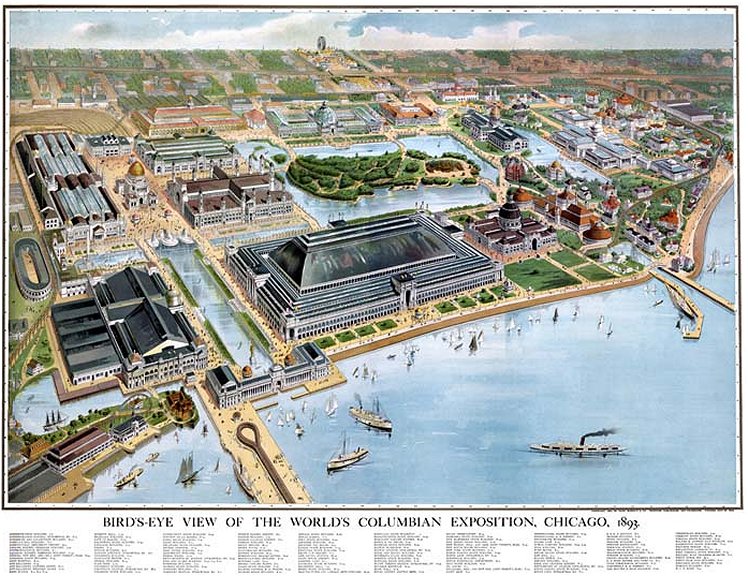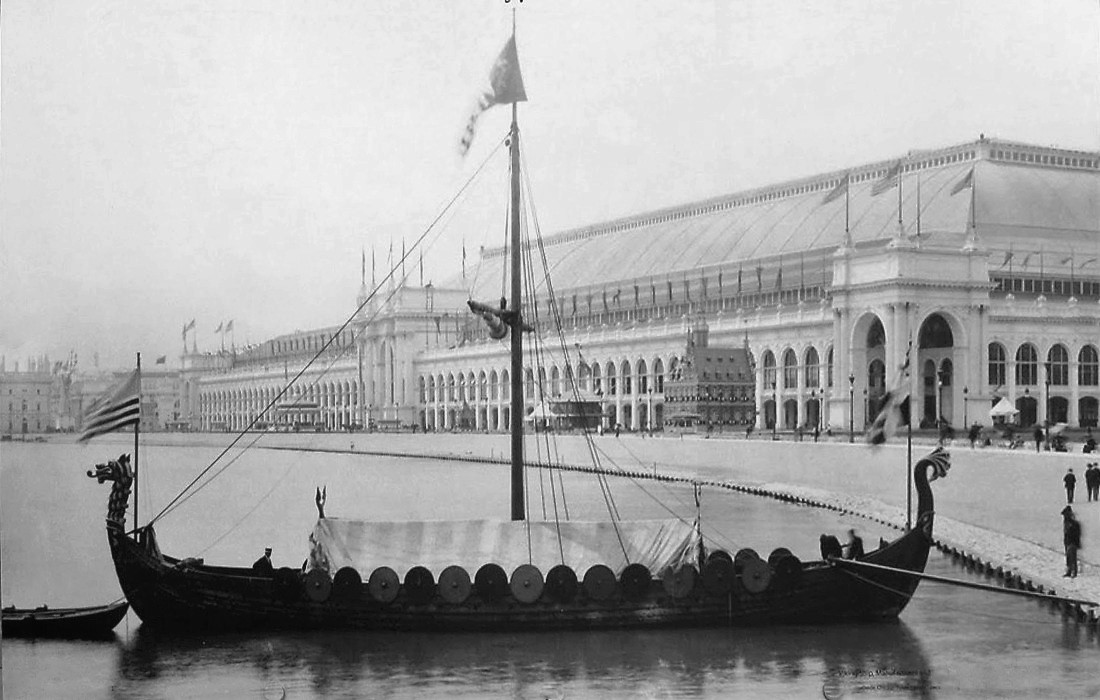Background of the Chicago's World Fair
The Chicago's World Fair was also known as the 1893 World's Columbian Exposition. It was also called "the most famous fair ever held on American soil". The city built a bunch of buildings for the expositon and cost a ton of money. The common people came to explore all the sites of the fair. Chicago was not expected to get the next world fair but they raised more then 10 million dollars and the U.S Congress was impressed. The World's Fair occupied more then 600 acres. They routinely told visitors that Chicago was the exhibit itself not the fair. The Congress granted the Columbian Expostion to Chicago. In three years they changed the Jackson Park Area into a state of the art international city. Frederick Law Olmstead ( one of the most famous architects of that time) was put in charge of all the building along with Daniel Burnham. The building were made out of steel frames and the frames were covered with white plaster, and it became known as "the white city" because of that plaster. It was built along lagoons, and parks and promenades that were wide.
Exhibits at the Chicago's Fair
Just like all fairs, some exhibits were mediocre. A woman from Missouri was sent to make sculptures out of butter, people that were visited Pennslyvania's exhibit saw a map of the United States made of pickles, and on the Midway they saw a two-headed pig. But other then that most visitors were treated to some incredible sights. They had moveable sidewalks that transported them over the half-mile pier that reached into Lake Michigan. The Electricity Building's glowed at night because of nearly 13,000 lightbulbs. For the visitors who only knew of kerosene lamps, the electric lights seemed like a miracle. Chicago answered Paris's Eiffel Tower by uncovering the world's first Ferris Wheel. George Washington Ferris was 34 when we designed. It was a monster. It stood 140 feet high, accommodated 60 passengersin each of its 36 glass cabs, and held 2,160 riders at one given time. It also rotated on a 45 ton axle (the largest piece of steel ever forged at that time. Exhibits also included a reproduction of the Santa Maria. The Midway Plaisance offered visitors a sneak-peek into other life and culture around the globe. Also, promotional poster were put up to promote the fair. The posters billed the exposition as "forming in its entirely the most significant and grandest spectacle of modern times." Most visitors agreed with that statement.
The Building Stage
The building was done mostly by a large group of construction workers that numbered almost to about twelve thousand. The laborers worked at night under electric lights and lived in Jackson Park in barracks that were built for them. The Exposition filled up almost 600 acres of land. This was three times as big as the expostion before it. 72 foreign nations sent exhibits to the fair and among these buildings was the Manufacturers and Liberal Arts Building which was at the time the biggest in the world. This building covered forty four acres and contained eleven acres of skylights in the roof. It could hold 150,000 people in it at any given time. Other buildings had themes like machinery, transportation, education, agriculture, and children focused buildings. Another building was built to home the international parliaments and speeches that went along with the fair, and this is the Chicago Art Institute currently.
For whom was the party thrown? Chicago? The United States?
The reason the exposition was so important is because everyone thought that it was going to "fail". The fair ended just as the United States entered an acute depression. People of Chicago who were poor, unemployed, and homeless started to live in the abandoned buildings of the White City. In July 1984, federal soldiers and railroad workers fought at the abandoned White City and a raging fire broke out. The inferno engulfed the entire frame and plaster White City. The city's residents traveled to Jackson Park to watch it. Just as the old frontier Chicago had ended in fire, so did the modern city. Only two Columbian Exposition buildings still stand today: the former Fine Arts Palace, which today is the Museum of Science and Industry, and the present day Art Institute. The Midway Plaisance remains as well, linking Jackson Park and Washington Park while fronting the University of Chicago. Although not much remains from the 1893 fair, its meaning to a growing city and a nation rising to prominense was profound.
Subscribe to:
Posts (Atom)




